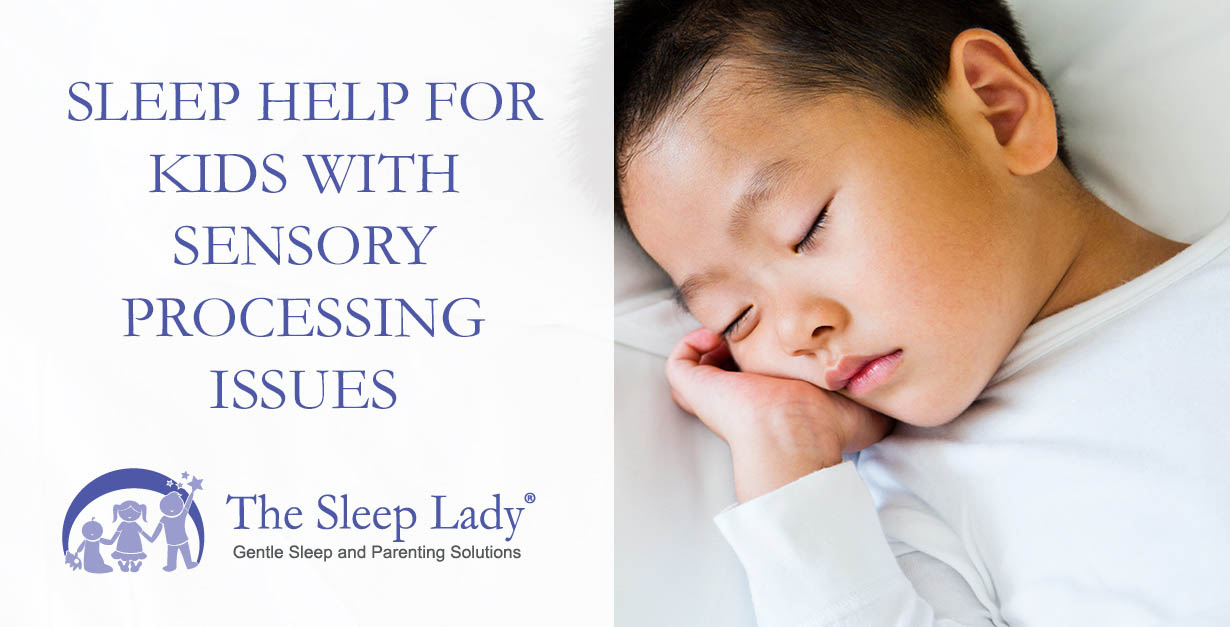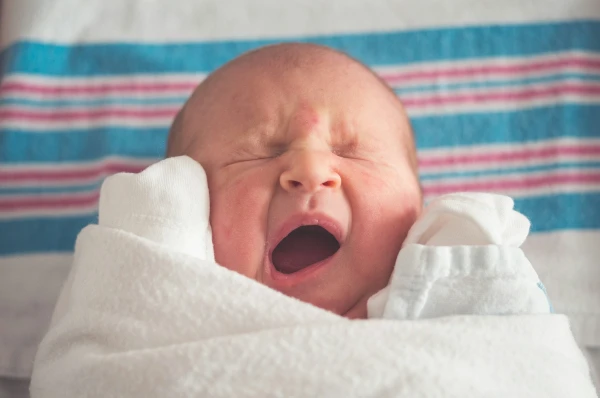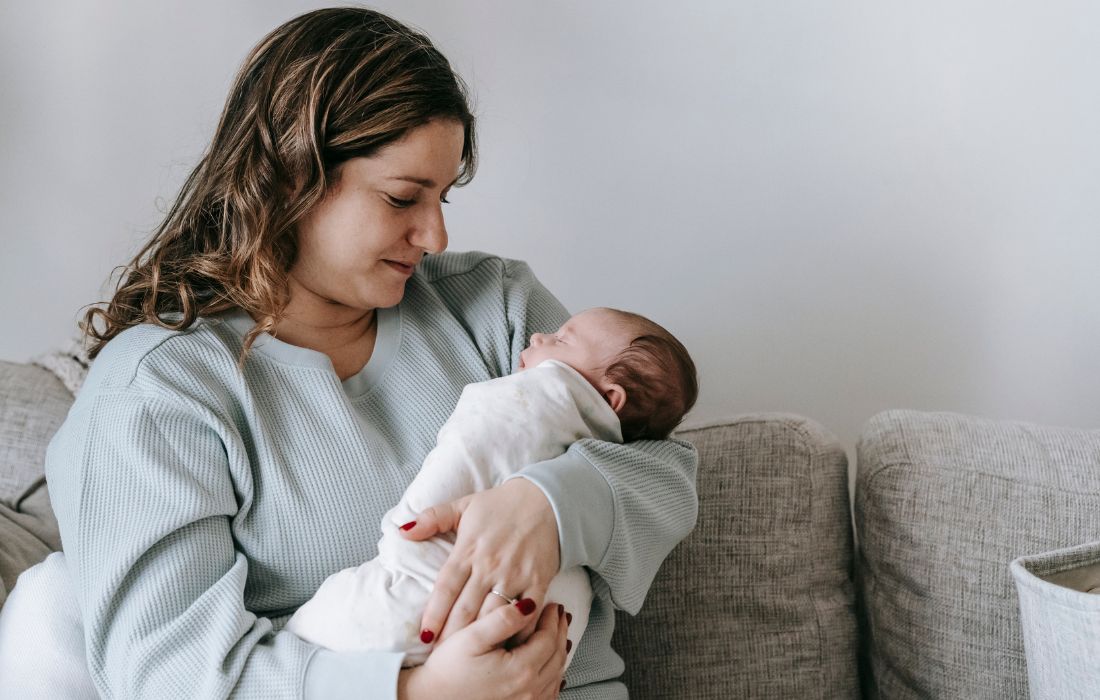Sleep issues are a HUGE topic of frustration and concern for parents of children with sensory differences. From the child requiring extensive help in falling asleep, to staying asleep, to the 2 a.m. “play time”, and the morning grumpy pants. Angie Voss, OTR, from A Sensory Life! offers her sleep help for kids with sensory processing issues, along with a list of hints, tools, and strategies to get your family to bed.
Sleep Affects the Whole Family
Sleep affects the whole darn family — the sibling who shares a room, or even in a separate room and of course at least one parent. We ALL need sleep, so when the child isn’t sleeping, it affects the whole family. The biggest problem is the snowball effect. When any of us do not get enough sleep it impacts mood, behavior, and self-regulation overall.
As always, the results are magnified for a child with sensory processing challenges. And for the parent of the child, this state of dysregulation — irritability, mood swings, impatience — from lack of sleep impacts that child’s state of regulation as well. It’s a double whammy.
Is There a Single Cure for Sleep Struggles?
As a therapist, I have always wanted to find that cure all for families and the sure ticket to sleep. Unfortunately I don’t think that single ticket is out there. I DO think there can be a combination of tickets which can work, but here’s the kicker: those tickets may change on a daily basis. I am going to list some possible solutions as well as factors that can impact the sleep/wake cycle.
It is up to you as a parent to consider each factor as well as some trial and error when it comes to what works and what doesn’t seem to work. PLEASE try not to get discouraged if something doesn’t work or if an idea works one night and not the next. I know the struggles personally and I also understand the frustration and extreme challenge this can create from my 20 years of helping families cope and find solutions to SLEEP.
The Entire Day Affects Nighttime Sleep
Sensory kids need an enriched sensory diet every single day including vestibular, proprioception, and tactile activities. This is what helps their nervous system maintain a ready state and self-regulation. If the child has had more than 1-2 hours of screen time that day — this includes computer, TV, video games, hand held devices — then they were deprived of the important sensory nutrition which their brain needed.
On the other hand, if the child was involved in some type of over-stimulating sensory activity that day like a big social event or new challenging multi-sensory experience, this can also impact the ability to sleep.
If a child gets to the point of exhaustion or “over tired” it can backfire on the nervous system.
This requires finding a balance and knowing when enough is enough for your child. You’ll need to be aware of the fact that your child can not handle as much social stimulation or partying as another child. That means not just dragging the child along to social events or play dates which may really be more for the parent. Sorry! Had to say it.
Does Proper Nutrition Help with Sleep?
Proper nutrition throughout the day can significantly impact the ability to sleep at night. Of course I know this one can be difficult to achieve, especially for our picky sensory kids. Being creative and also aware of everything the child is consuming in a day is possible.
The biggest factors to keep in mind:
- No dairy
- Limit refined sugar
- No preservatives, additives, and dyes
- Plenty of organic fruits and vegetables
- Of course no caffeine for a child and keeping in mind that cocoa and other forms of chocolate have enough caffeine to impact the ability to fall asleep.
- Low iron levels can cause restless leg syndrome, which can affect sleep. Your doctor can request to have labs drawn for this.
- Purified or spring water to hydrate
- Plant-based protein
- Focus on non-GMO and organic, local sources for food
- Avoid processed foods
- Gluten can be a factor
Medication, Reflux, and Sleep Apnea
If at all possible, refrain from any medications to help with sleep. I know this is often recommended by doctors, but with my experience this is not the solution. Instead it often leads to side effects and new issues. For a child with sensory challenges, medications further disrupt the processing and chemistry in the brain.
Reflux is an issue which can impact the ability to sleep. This should be discussed and ruled out or addressed with your child’s doctor. This is commonly caused by dairy products.
If the child snores or seems to make a lot of noise at night, a sleep study should be considered. I think it is always important to discuss the sleep difficulties with the child’s doctor, and bring up or request a sleep study to rule out or to address sleep apnea. Snoring can also be caused from the consumption of dairy.
Before Bed Sensory Tools and Strategies
- Keep in mind that this will likely be a trial and error process, unless you strike gold and the first sensory strategy you try is the ticket. You can try a combination of these ideas, they are in no way going to over-stimulate your child. It just may take more than one idea or an alternate idea the next day.
- Deep pressure touch to arms and legs, also called hand hugs or squeezes.
- Try applying magnesium oil to the bottom of the child’s feet at bedtime.
- A weighted blanket or heavy quilt folded up to increase weight and pressure. Tight fitting pajamas or compression clothing at bedtime are great too.
- A cuddle swing or hammock swing may be used as a cozy nest for sleeping. This is only appropriate for children old enough and able to maneuver around in the swing throughout the night and get in and out independently. The swing should hang close to the floor for safe and independent use. I highly recommend a compression swing from Yogapeutics for this.
- Gentle, rhythmical, and linear swinging in a cuddle or hammock swing or Yogapeutics compression swing for at least 15 minutes before bedtime is a great idea.
- Try a rocking chair in a quiet, calm, dark place right before bedtime.
- If the child is small enough, gentle swinging in a blanket can be very calming.
- Provide an oral sensory tool.
- A vibrating pillow or hand held massager placed under the mattress for a diffused vibration can be helpful. There are also vibrating mattresses available for purchase.
- Try inverting the head throughout the day and right before bedtime as well.
- Encourage joint compression and joint traction activities prior to bedtime, including head compression.
- No screen time at least one hour prior to bedtime.
- Try the “tortilla roll up” in a blanket with added firm pressure (proprioception) from a large therapy ball by rolling the ball over the child’s body .
- Wearing noise cancelling headphones or earplugs at night can be helpful for some children.
- Try a large bean bag or pillow cave with tons of pillows and blankets. This can be where the child sleeps, not just before bedtime.
- Try Bubble Mountain. Any resistive blowing activity will work as well, in the bathtub is a great place. Have your child create their own bubbles for the bath!
Sleep Environment
Be sure the room is free of distractions, light, or clutter. White noise or soft instrumental music is also a great tool. Sometimes a humidifier works as well. If possible, have the child sleep in their own space. Create a nice cozy cave in a big walk in closet or in a play tent filled with pillows and blankets. Canopy beds or the bottom bunk of a bunk bed can be helpful as well. Sensory kids like that defined and cozy space factor.
Be sure to remove all wifi capable devices and cell phones from the bedroom at night.
Once you find out what works with your child, everyone will sleep better in your home.
Original article: The Sensory Side of Sleeping…Sleep Challenges





